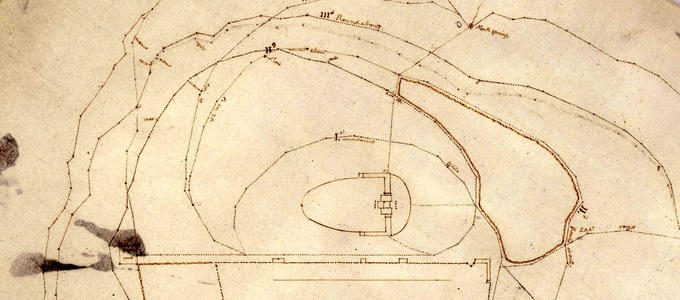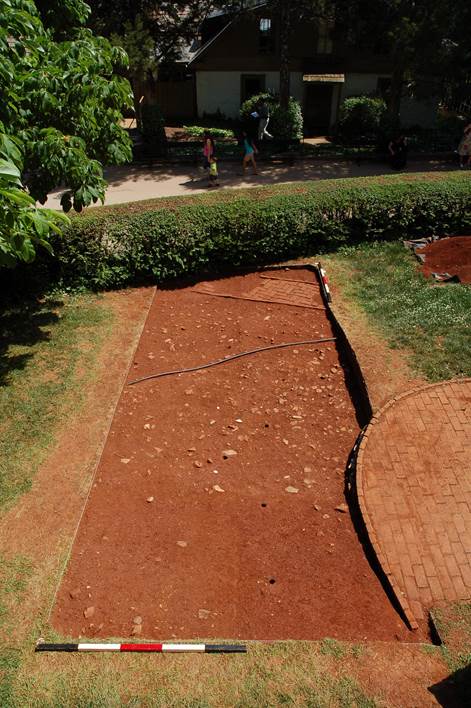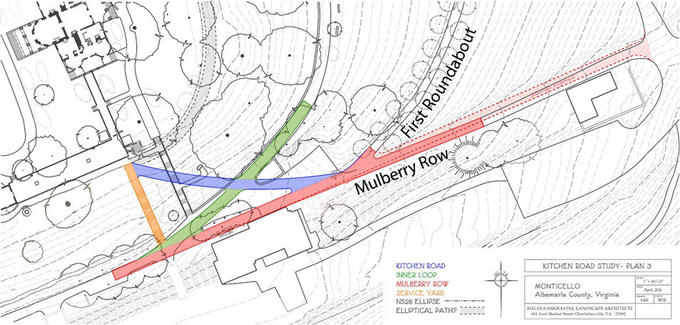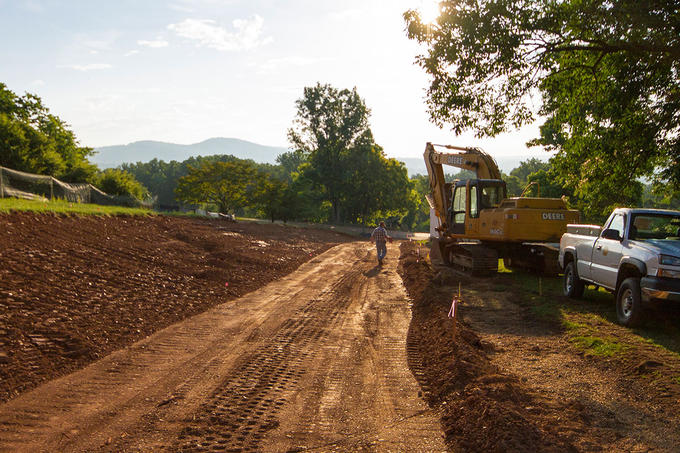
Reuniting Monticello's Landscape of Slavery: Reconstructing Jefferson's Roads
Monticello visitors are experiencing a once-in-a-lifetime event as the Thomas Jefferson Foundation undertakes a major landscape restoration project on Mulberry Row. Jefferson, whose passion for landscapes and gardens closely paralleled his devotion to architecture, created one of the most complex landscapes in the United States at Monticello. Using principles derived from the ferme ornée (ornamental farm) movement, Jefferson combined an aesthetically-arranged agricultural landscape with a unique system of interlocking utilitarian and recreational roads. These roads were used daily by Jefferson and his enslaved workers and created connections to vital elements of the larger plantation, including the vegetable garden, Mulberry Row, and the agricultural fields.
Unfortunately, Monticello’s landscape was altered soon after Jefferson’s death and Jefferson’s road system was largely lost. When the Thomas Jefferson Foundation purchased 650 acres of Jefferson’s original 5000 acres in 1923, very little remained of Jefferson’s ambitious landscape scheme. Efforts to restore the landscape started in 1939 with the help of the Garden Club of Virginia and much of the landscape surrounding the house was reestablished in the 1970s and 1980s. However, major elements are still missing and Jefferson’s once unified landscape remains divided by 20th century intrusions.
The ongoing restoration project is reconnecting this divided landscape by reconstructing Jefferson’s Kitchen road, realigning Mulberry Row, rebuilding the kitchen path, and extending the allée of Jefferson’s famous Mulberry trees.
Because Monticello is the best documented, and most intensively studied, plantation in North America, historians, archaeologists, and landscape architects were able to precisely determine the location of the missing landscape features. Traces of the missing roads were discovered through clues gleaned from Jefferson’s own writings by William L. Beiswanger, former Robert H. Smith Director of Restoration, and an intensive, multi-year archaeological investigations. These findings were used by landscape architects to develop construction drawings that are now being used to accurately recreate the missing features.
When the project is finished, crucial missing links in Monticello’s innovative landscape will be restored. The historic, visual, and functional links between the house, the ornamental grounds, and the plantation will be re-established for visitors to see and experience. The Kitchen Road Project, a gift from the Garden Club of Virginia, began June 2 and will be completed later this year.
The Mountaintop Project is made possible by a transformational contribution from David M. Rubenstein. Leading support was provided by Fritz and Claudine Kundrun, along with generous gifts and grants from the Sarah and Ross Perot, Jr. Foundation, the Robert H. Smith Family Foundation, Mr. and Mrs. John H. Birdsall, Mr. and Mrs. B. Grady Durham, the Mars Family, the Richard S. Reynolds Foundation, the National Endowment for the Humanities, Charlotte Moss and Barry Friedberg, the Joseph and Robert Cornell Memorial Foundation, the Mary Morton Parsons Foundation, the Cabell Foundation, the Garden Club of Virginia, and additional individuals, organizations, and foundations.







